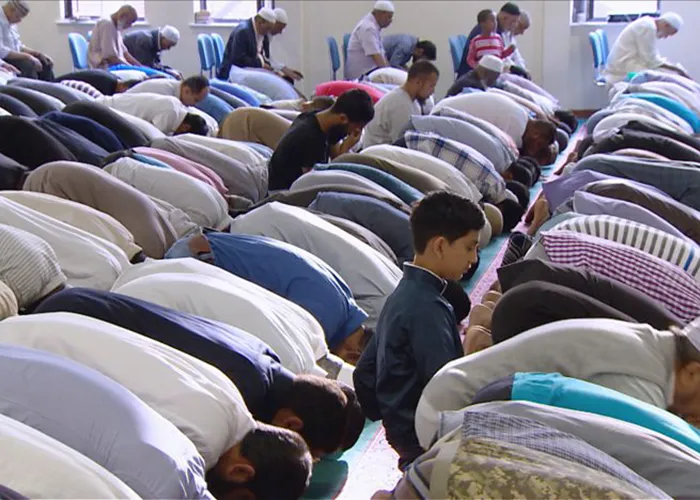Religious-Inquiries – Volume02 Issue19
Comparative Fiqh Analysis on the Place of Prayer
This article compares the rulings of three prominent contemporary Shia jurists—Imam Sayyid Ali Khamenei, Ayatollah Sayyid Ali Sistani, and Ayatollah Naser Makarem Shirazi—on the conditions and rules governing the makān al-ṣalāt (place of prayer). The focus is on common themes such as usurped land, government properties, conditions of the prayer place, and makrūh (discouraged) locations.
1. Prayer on Usurped Land
Imam Khamenei: Prayer on usurped land is invalid even if one stands on a mat or board placed atop it. However, if there is a considerable probability of shar‘i legitimacy (e.g. government use), the prayer is valid.
Ayatollah Sistani: Prayer on usurped land is void as an obligatory precaution, even if on a mat or saddle. Accidental or ignorant prayer on usurped land is valid, unless one is the usurper (then it’s invalid).
Ayatollah Makarem: Holds a similar view—prayer on usurped property or usurped benefits (e.g. tenant’s rights) is void. Accidental or ignorant use may be excused unless one is the usurper.
Comparison: All three agree that prayer on land certainly known to be usurped is invalid. All accept accidental or ignorant cases as potentially valid. Imam Khamenei uniquely considers governmental seizure as potentially legitimate grounds.
2. Praying in Government-Owned or Confiscated Buildings
Imam Khamenei: If government confiscation is possibly based on shar‘i/legal grounds (e.g. court orders), prayer there is permissible.
Ayatollah Sistani: Does not directly address government confiscations but rules void any prayer without rightful use or consent, including unpaid inheritance or will obligations.
Ayatollah Makarem: Similar to Sistani, insists on proper ownership and consent for prayer to be valid.
Comparison: Imam Khamenei adopts a more pragmatic view towards public use of land seized by Islamic authorities, whereas the other two are more cautious and procedural.
3. Praying in Parks, Roads, and Public Areas
Imam Khamenei: Allows prayer in parks unless there is certainty of usurpation. Public prayer areas next to restaurants require owner permission if usage is exclusive.
Ayatollah Sistani: Permits prayer in open lands, even if owner is minor or unwilling, unless explicit disapproval exists.
Ayatollah Makarem: Also allows prayer in open uncultivated land without fences, unless clear disapproval is known.
Comparison: All three broadly permit prayer in open or public lands with caveats on explicit disapproval or restricted access.
4. Najāsah in the Place of Prayer
Imam Khamenei: Prayer is valid if impurity does not transfer and place of prostration is pure.
Ayatollah Sistani: Prayer is invalid if the place of sajdah is najis, even if dry. Preferable for entire area to be pure.
Ayatollah Makarem: Aligns with Sistani on this; place of sajdah must be pure, and transfer of najāsah renders prayer void.
Comparison: Agreement across all on invalidity if the mawḍi‘ al-sujūd is najis. Khamenei is slightly more lenient regarding rest of the space.
5. Women Praying Near Men
Imam Khamenei: By obligatory caution, woman’s place should be at least a hand-span behind a man’s in the same row.
Ayatollah Sistani: Prayer is invalid if woman stands in front or beside man without separation. Valid if there’s a screen or ten-arm’s length gap.
Ayatollah Makarem: Echoes Sistani’s position with the same rulings.
Comparison: All hold that men must not pray behind or side-by-side with women without distance or barrier, with Khamenei offering a more minimal buffer.
6. Prayer in Motion (Boats, Trains, etc.)
Imam Khamenei: Obligatory to pray in time even on a moving boat if otherwise missed.
Ayatollah Sistani: Valid as long as stability allows standing and proper movements; must face qibla as much as possible.
Ayatollah Makarem: Allows prayer in motion if unavoidable; should try to face qibla during takbīr and recite while turning.
Comparison: All jurists accept prayer in motion in necessity, with emphasis on facing qibla as much as possible.
7. Prayer in the Presence of Music or Distractions
Imam Khamenei: Validity remains, but staying in a place with ḥarām music is impermissible. Prayer is makrūh if concentration is affected.
Ayatollah Sistani: Hearing ḥarām music is sinful but does not invalidate the prayer.
Ayatollah Makarem: Not explicitly discussed in provided rulings, but generally aligns with standard position that hearing ḥarām music is sinful, not invalidating.
Comparison: Agreement that ḥarām music renders prayer makrūh or sinful to stay but does not invalidate it.
Conclusion
While there is broad alignment among the three scholars on the essential invalidity of prayer on usurped land, the purity of the place of prostration, and the issue of distraction during prayer, there are subtle but meaningful distinctions. Imam Khamenei’s views reflect a practical jurisprudence that considers modern governance and public utility. Ayatollah Sistani and Ayatollah Makarem Shirazi tend to emphasise legal ownership and procedural correctness. All three uphold the sanctity of prayer while navigating modern complexities with distinct emphases.
Sources:
- Imam Khamenei, Practical Laws of Islam, Istifta’at section on place of prayer
- Ayatollah Sistani, Islamic Laws, Sections 875–924
- Ayatollah Makarem Shirazi, Practical Laws of Islam, Issues 792–813
editor's pick
news via inbox
Subscribe to the newsletter.




